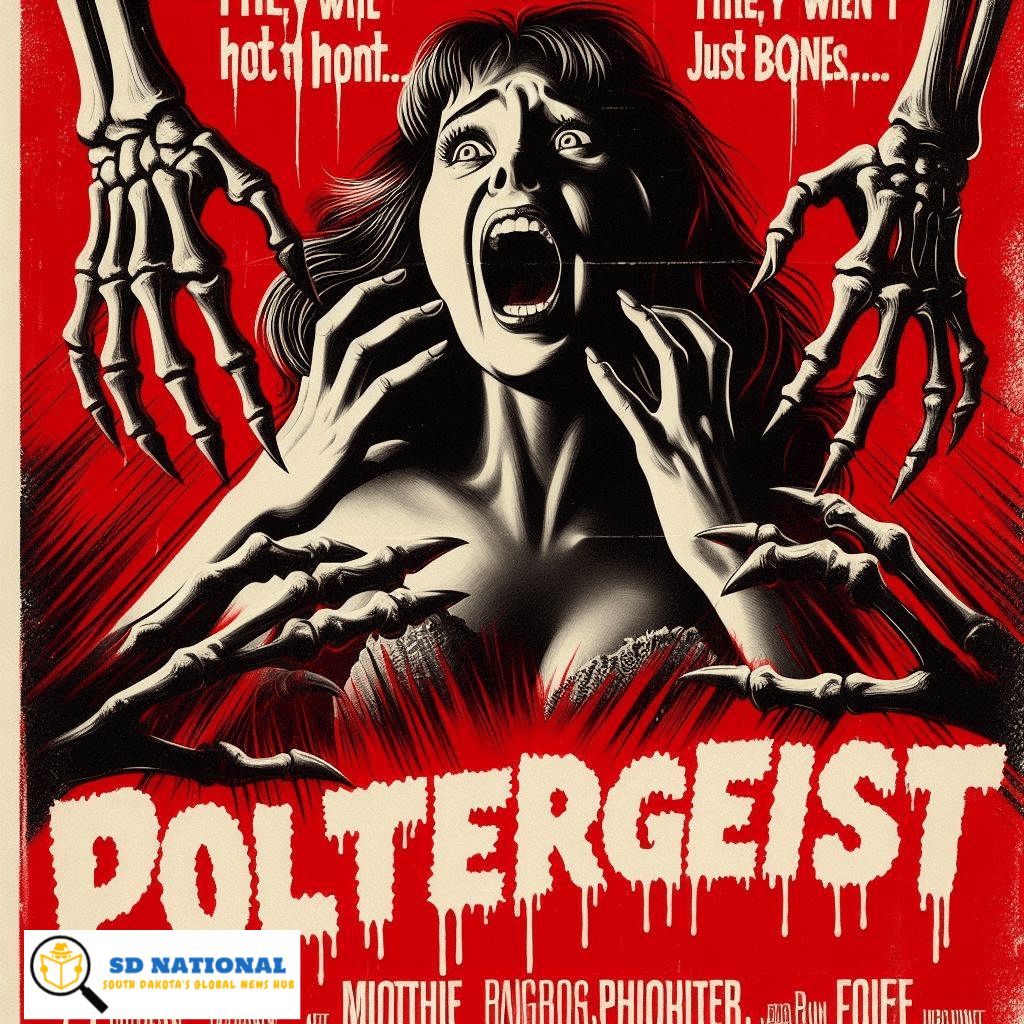The classic 1982 supernatural horror film Poltergeist, directed by Tobe Hooper and produced by Steven Spielberg, continues to terrify audiences with its chilling story of a suburban family plagued by malevolent spirits. But beyond the iconic special effects and tear-jerking moments, the film harbors a behind-the-scenes secret that adds an extra layer of unease: the use of real human skeletons in a pivotal scene.
This article delves into the unsettling truth behind the skeletons in Poltergeist, exploring the reasons for this unusual choice, the actors’ reactions, and the ethical considerations that continue to linger.
A Shocking Revelation: Unearthing the Real Skeletons
The climax of Poltergeist features a nightmarish sequence where the Freeling family home descends into chaos. The swimming pool becomes a churning vortex, furniture explodes, and spectral figures materialize from the depths. Amidst this pandemonium, a key scene showcases a terrifying swarm of skeletal hands reaching out from the pool.
What many viewers might not realize is that these skeletal appendages were not fabricated props, but actual human skeletons. Special effects makeup artist Craig Reardon confirmed this under oath during a deposition, sending shivers down the spines of fans and sparking debate within the film industry.
The Reasoning Behind the Real Bones: A Cost-Effective Choice?
The decision to utilize real skeletons stemmed from a surprisingly practical reason: cost-effectiveness. Creating realistic-looking plastic skeletons proved to be more expensive than acquiring actual ones. Special effects in the early 1980s were still evolving, and the filmmakers sought a solution that delivered a chilling effect within budgetary constraints.
While cost might have been the initial driving force, there are some who believe the real skeletons added an unintended layer of authenticity to the scene. The imperfections and natural variations inherent in real bones may have contributed to a more unsettling and believable visual effect.
Actors Unknowingly Face the Real Thing: Reactions and Repercussions
The use of real skeletons presented a unique challenge for the actors involved. JoBeth Williams, who portrayed Diane Freeling, the mother of the family, later revealed in an interview that she was unaware of the skeletons’ authenticity during filming. The actors were told they would be wading through a tank filled with “mud,” a far cry from the grim reality.
Williams’s reaction upon learning the truth highlights the potential psychological impact of this decision. The unsettling nature of interacting with real human remains, even unknowingly, adds another dimension to the film’s legacy.
Ethical Considerations: A Debate Ignited
The use of real skeletons in Poltergeist has sparked ethical discussions within the film industry. While some argue that the ends justify the means, achieving a more realistic horror experience, others express concerns about the respect owed to the deceased.
The film’s production team has never disclosed the origin of the skeletons, leaving the source shrouded in mystery. This ambiguity adds to the ethical unease, as questions regarding the legality and proper acquisition of the remains remain unanswered.
A Haunting Legacy: The Skeletons and the Film’s Impact
The revelation about the real skeletons in Poltergeist has undoubtedly become a part of the film’s enduring legacy. It adds a layer of macabre intrigue that continues to captivate and disturb audiences.
However, the ethical considerations surrounding this decision cannot be ignored. The film industry has evolved significantly in terms of special effects capabilities, and the use of real human remains would likely be met with far greater scrutiny today.
Beyond the Bones: The Enduring Power of Poltergeist
While the use of real skeletons is a undeniably fascinating and unsettling aspect of Poltergeist’s production, it’s important to remember the film’s lasting impact transcends this singular detail.
Poltergeist’s enduring power lies in its ability to tap into primal fears of home invasion, the vulnerability of families, and the unknown forces that may lurk beneath the surface of our seemingly ordinary lives. The groundbreaking special effects, the relatable characters, and the suspenseful narrative all contribute to the film’s ability to terrify and resonate with viewers.
The controversy surrounding the skeletons adds another layer to the film’s mystique, but it doesn’t overshadow the power of the story itself. Poltergeist remains a landmark achievement in the horror genre, a film that continues to chill audiences and spark conversation decades after its release.
Poltergeist: A Legacy of Horror and Mystery
Poltergeist’s legacy is undeniably intertwined with the unsettling truth about the real skeletons. It serves as a reminder of the lengths filmmakers were willing to go to in pursuit of a visceral horror experience.
The ethical considerations surrounding this decision continue to spark debate, highlighting the evolving nature of filmmaking and its responsibility toward respecting the deceased.
Poltergeist remains a significant horror film, captivating audiences with its narrative, special effects, and now, the unsettling layer of authenticity woven into its production. The lingering questions surrounding the skeletons add another dimension to the film’s mystique, ensuring its place as a chilling and thought-provoking entry into the horror genre.
A Final Chill: The Skeletons and the Power of Suggestion
The human mind is a powerful instrument, susceptible to suggestion and the amplification of fear. Whether the skeletons in Poltergeist were real or meticulously crafted props, the knowledge of their authenticity undoubtedly enhances the unsettling effect of the scene. It taps into a primal fear of the unknown, the unsettling possibility that the horror transcends the realm of fiction and brushes uncomfortably close to a darker reality. This ambiguity, this lingering doubt, adds an extra layer of potency to the film’s scares, leaving audiences questioning what truly lurks beneath the surface.
This element of the unknown, the unsettling possibility that the horror transcends the realm of fiction, plays a powerful role in amplifying the film’s scares. It leaves viewers questioning what they’ve witnessed, blurring the lines between cinematic illusion and a darker, more unsettling reality. This lingering uncertainty adds a layer of psychological unease that lingers long after the credits roll.



